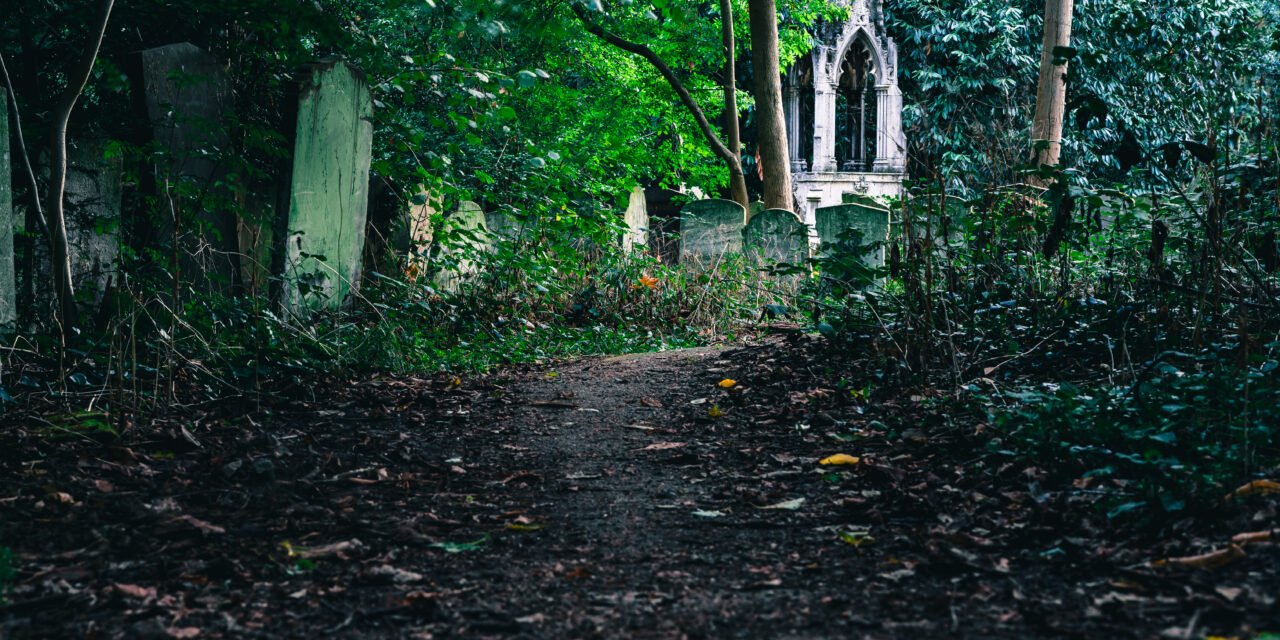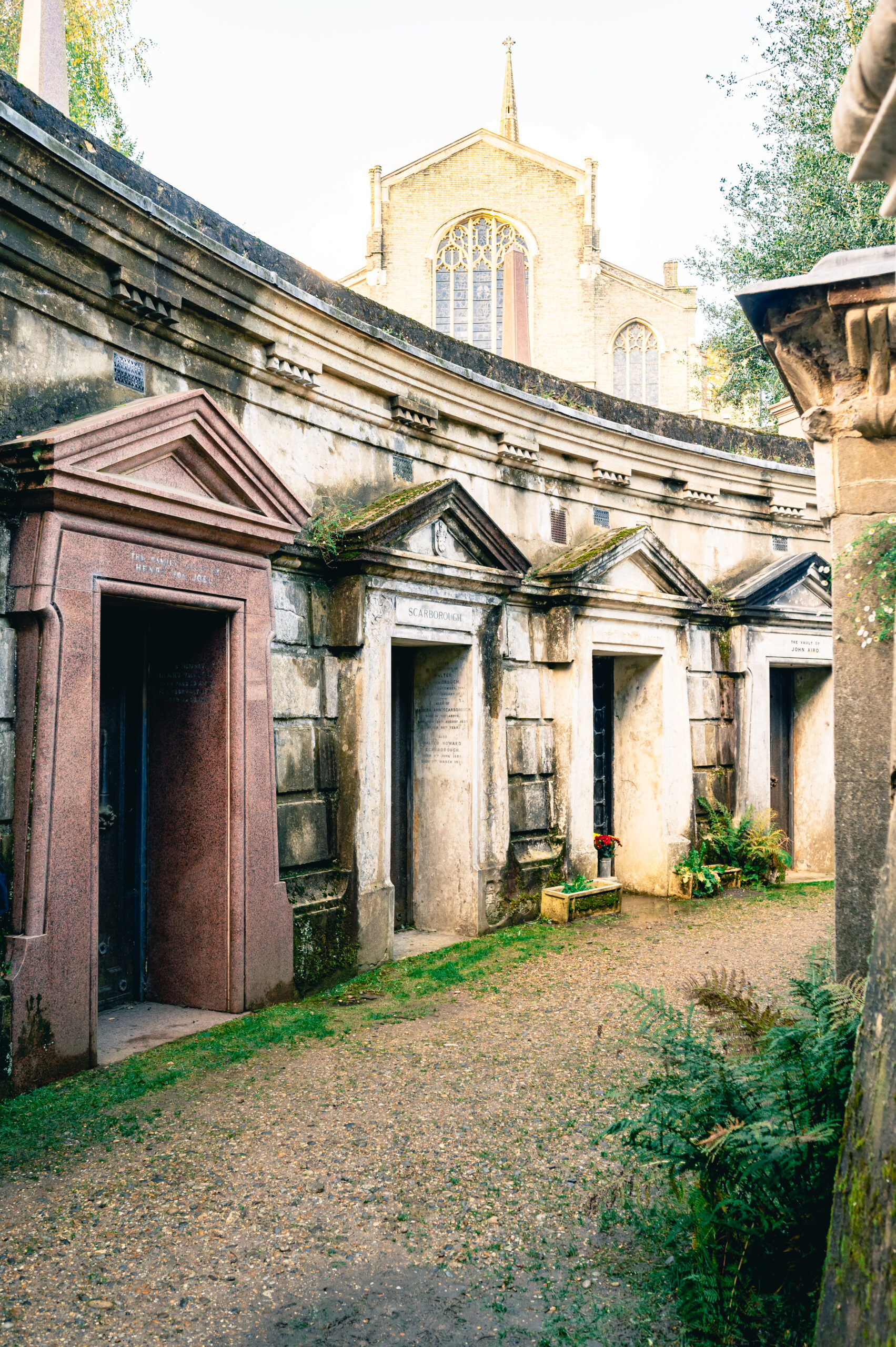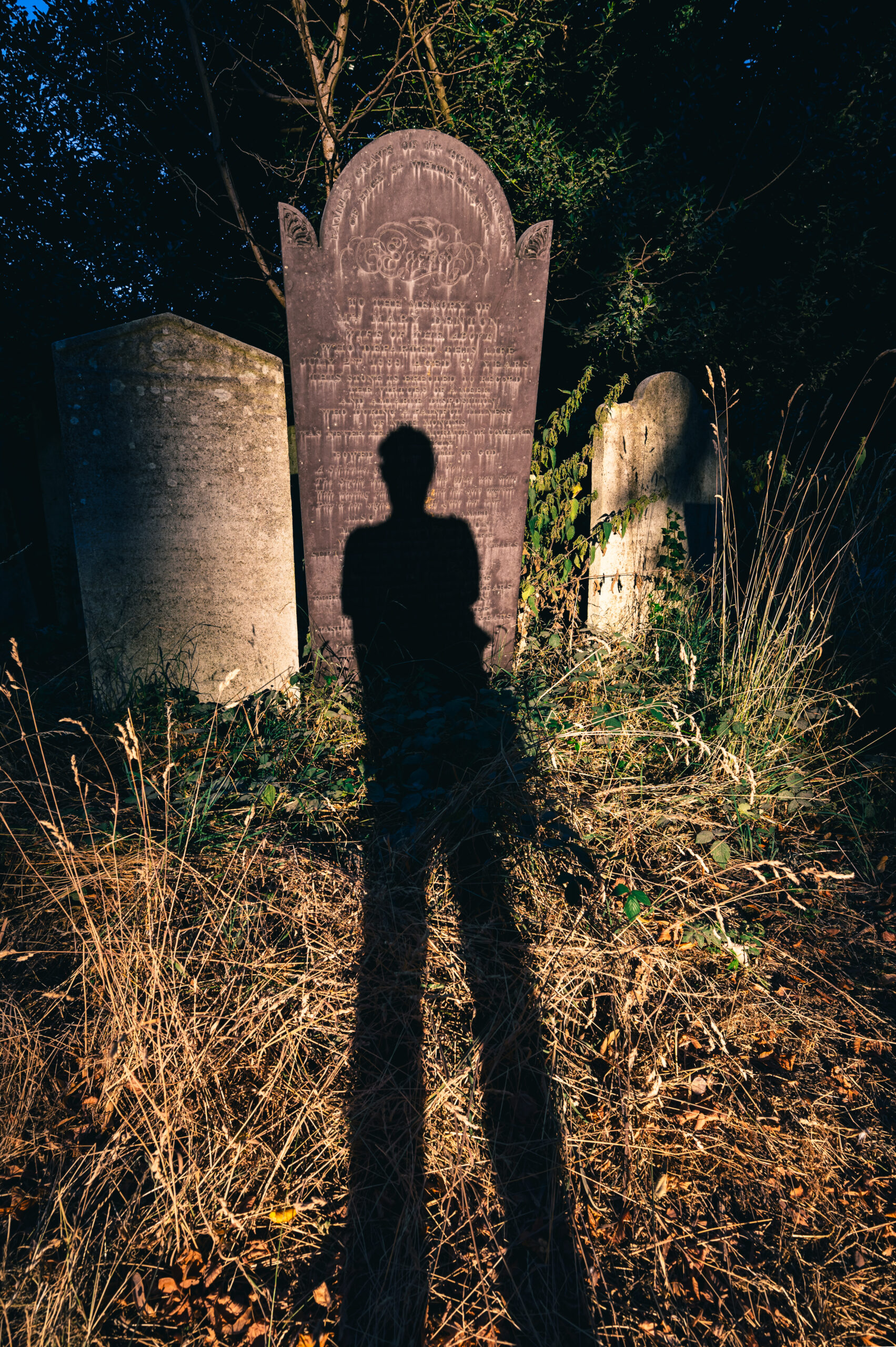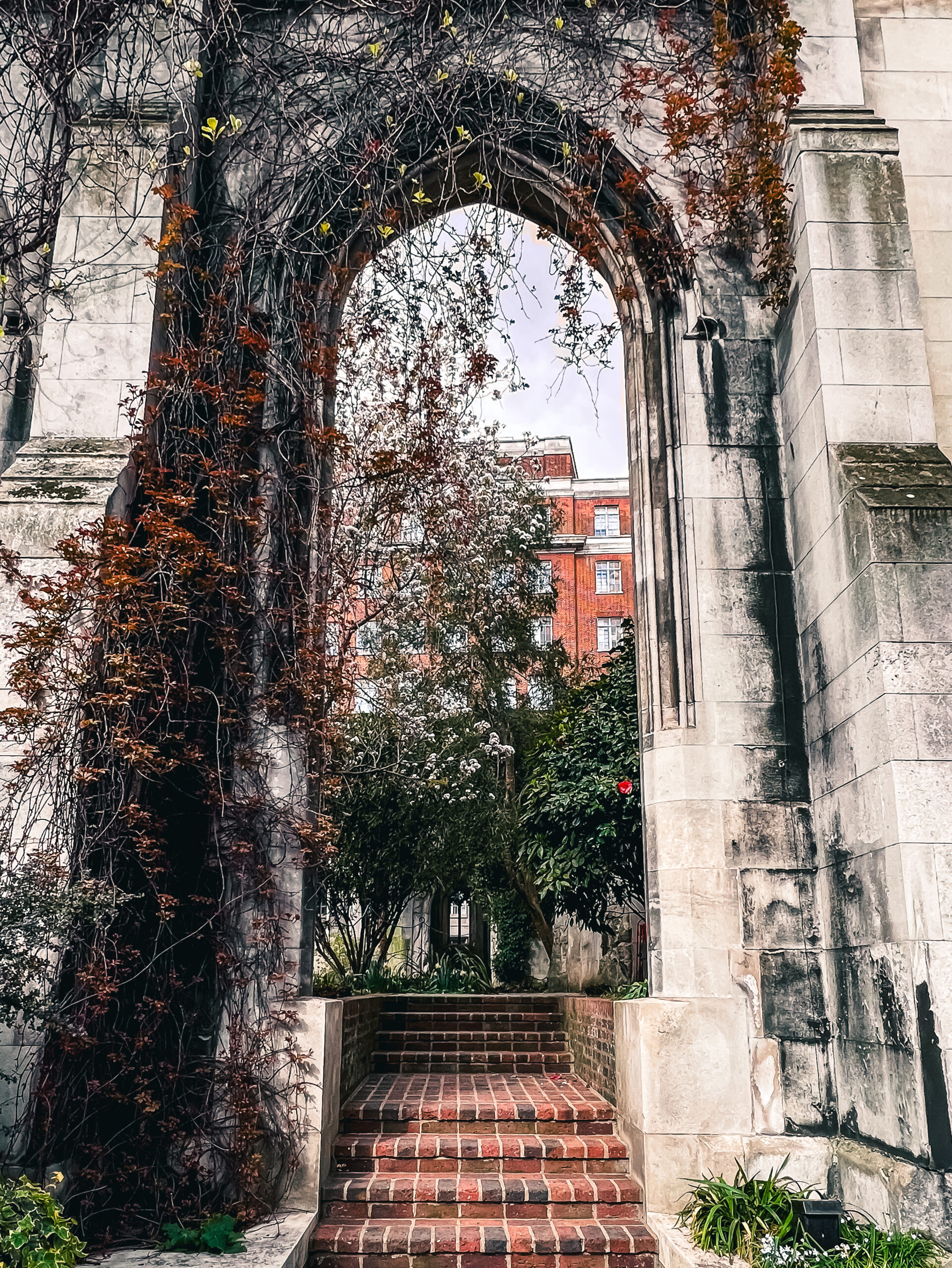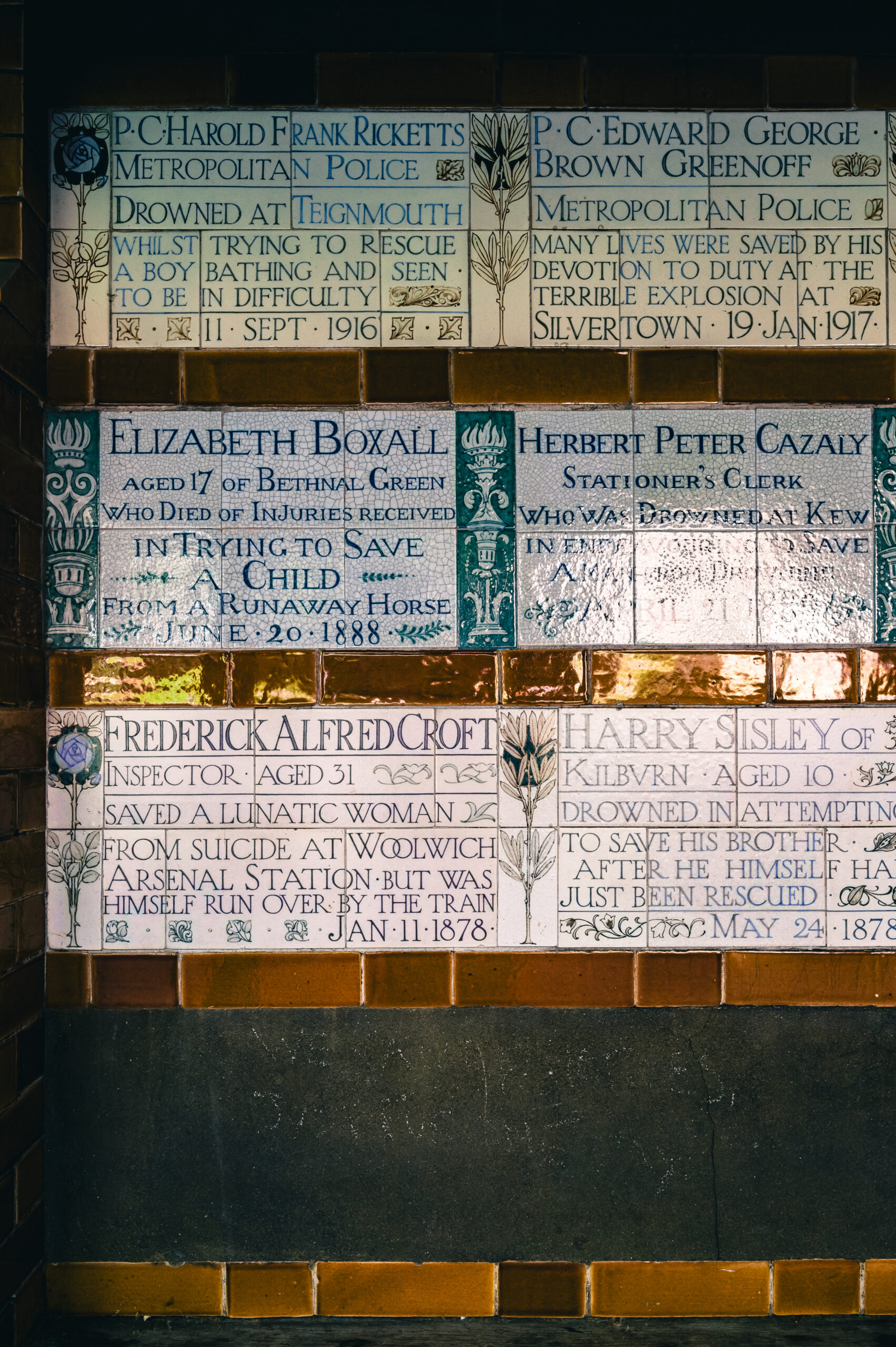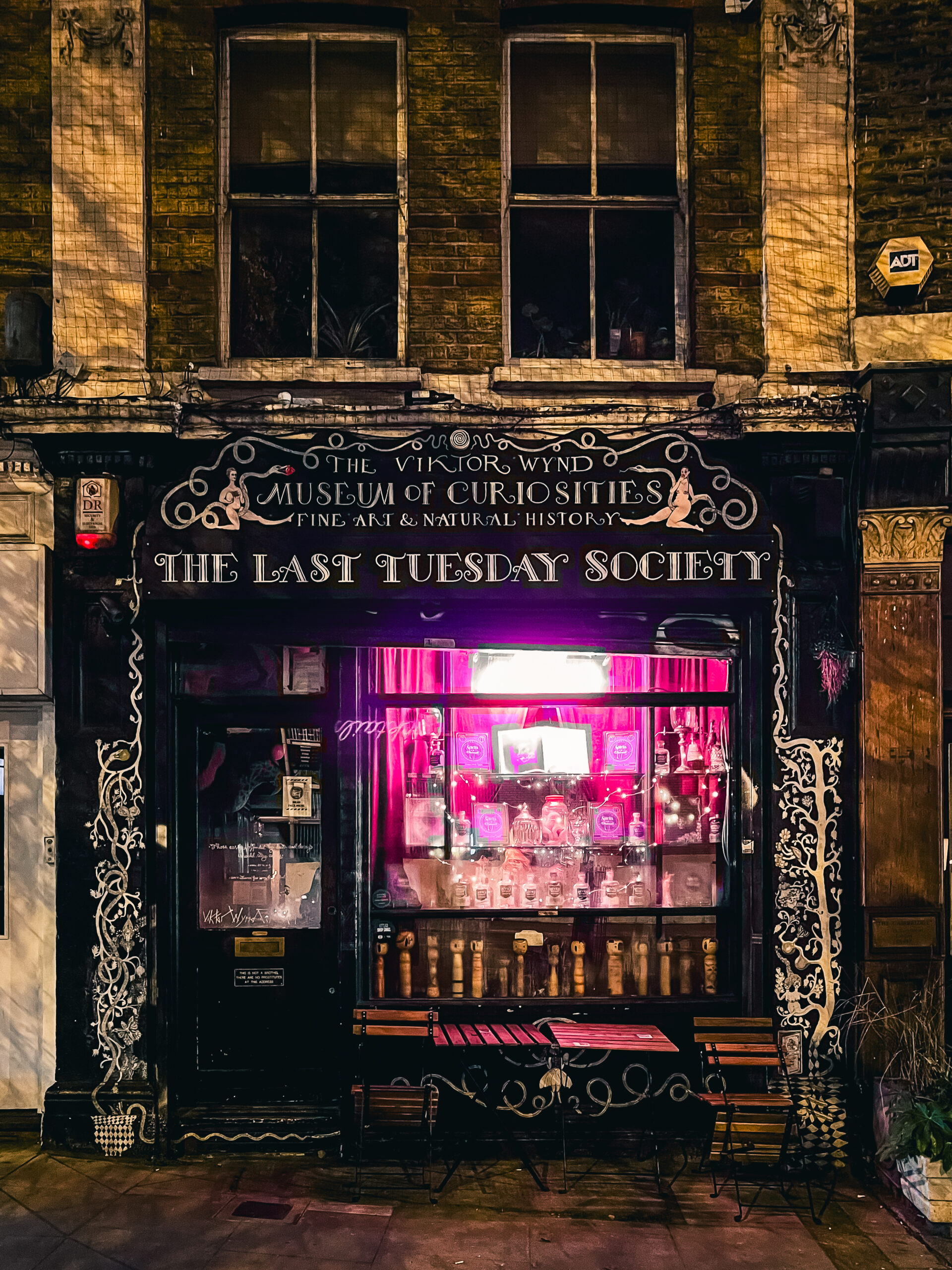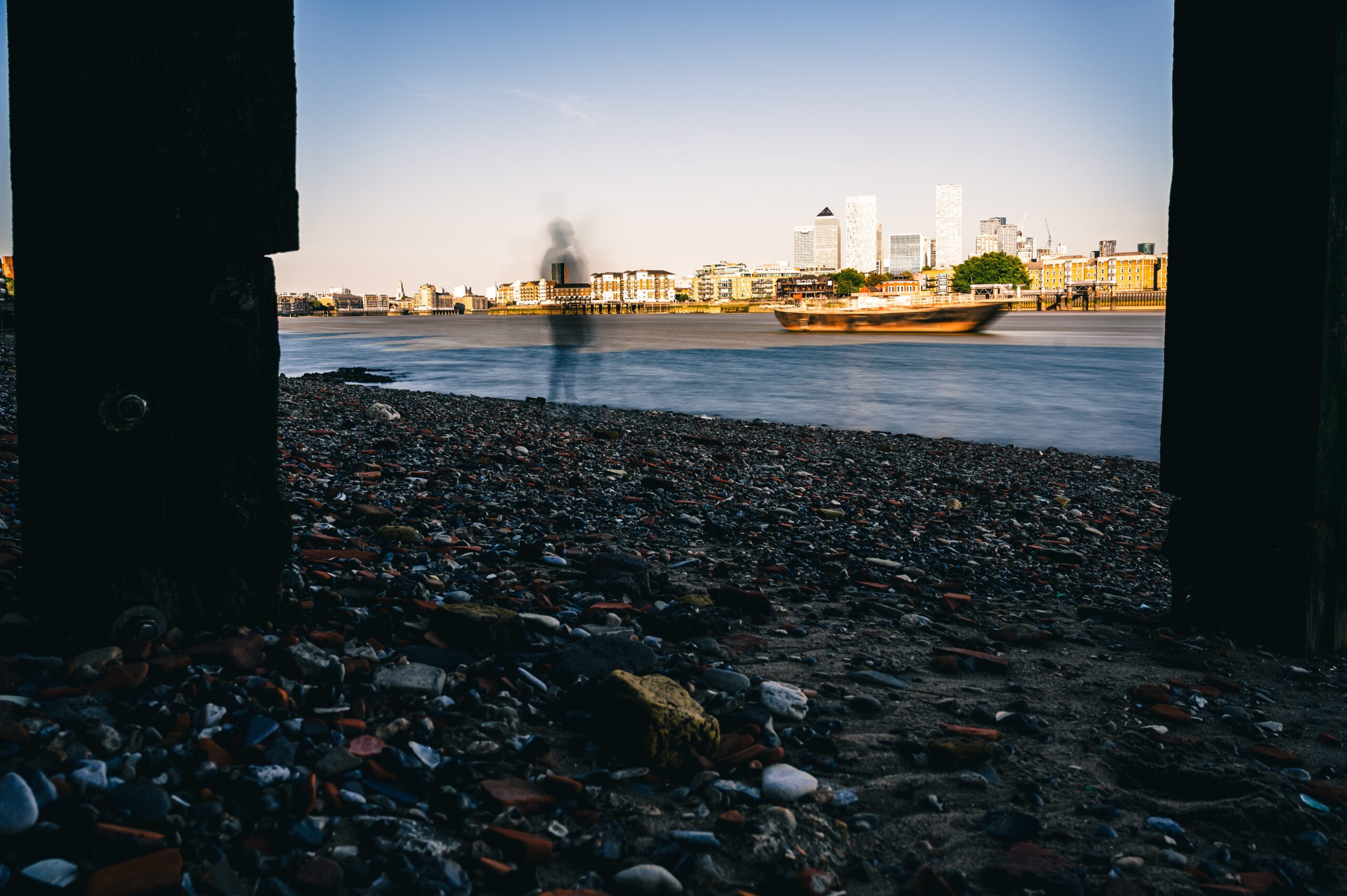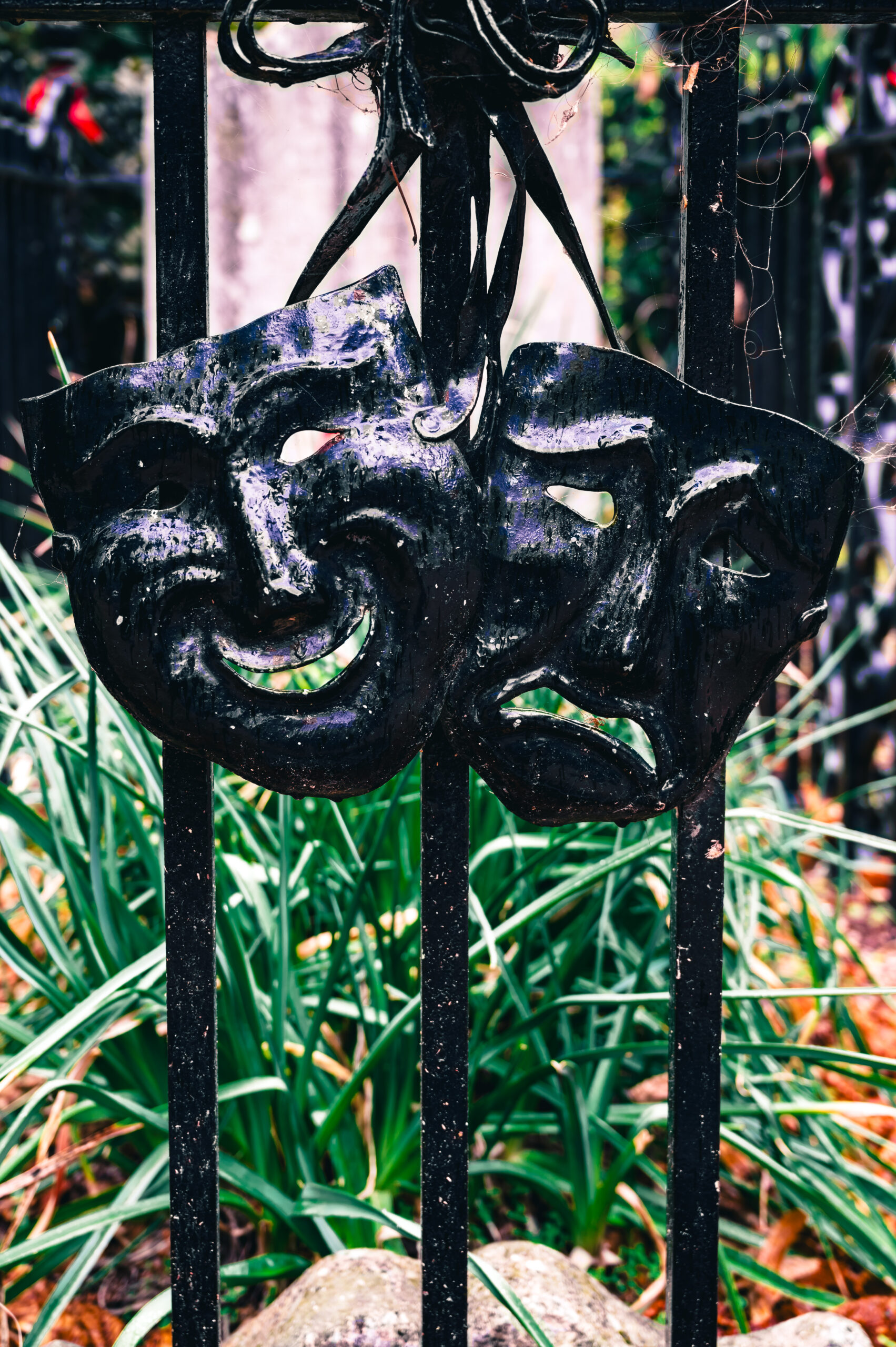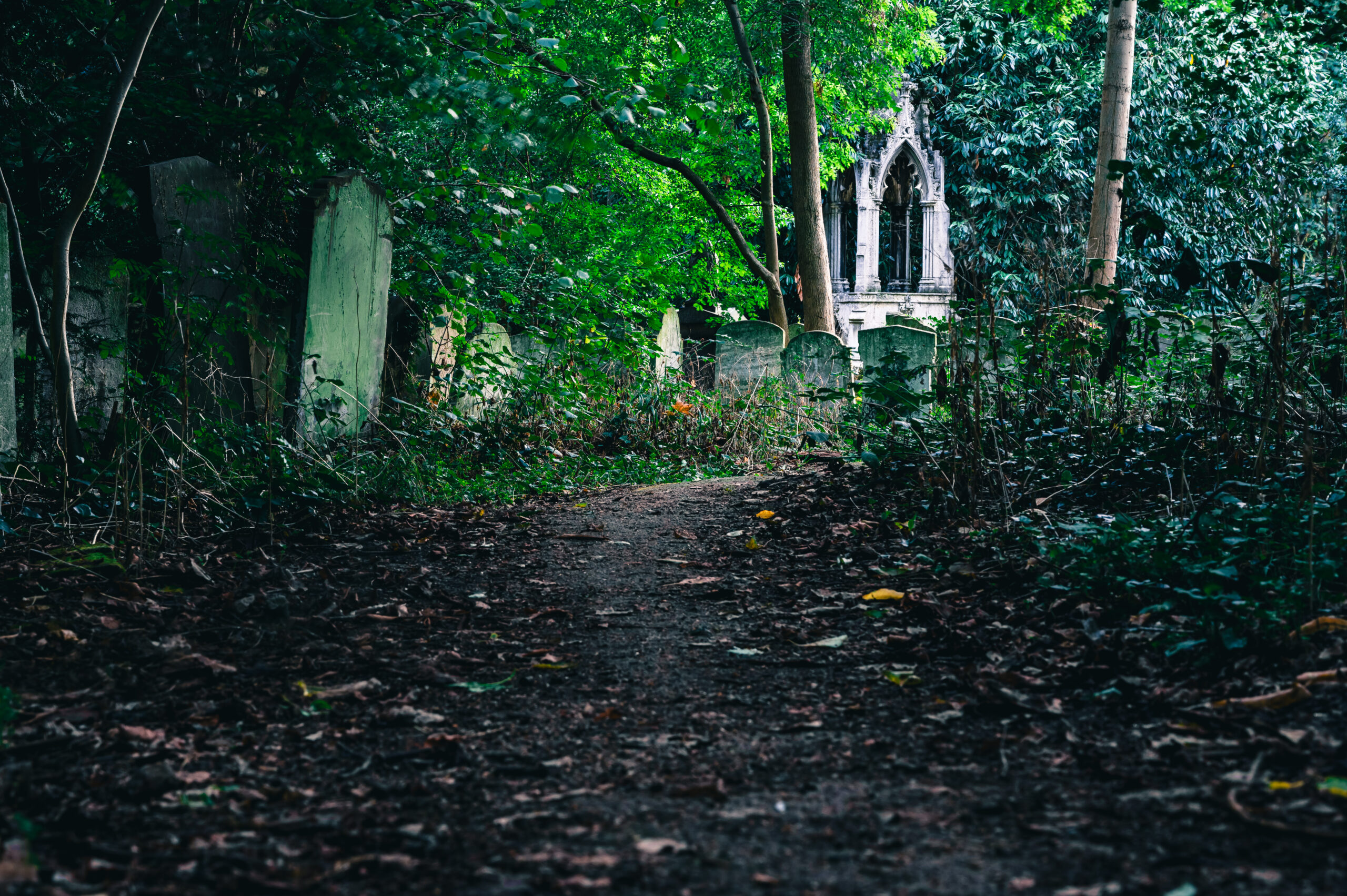
The weight of 2,000 years of history, the ruins, and the striking contrast between modernity and antiquity make London one of the best cities for Halloween exploration. Long walks through streets layered with autumn leaves, cosy lunches in old bistros named after dark legends, and visits to cemeteries where the history and residents are as significant as any monument all add to London’s Halloween allure. As an urban explorer and long-time Londoner, my favourite haunts lie just off the streets—places you can wander alone at night, where the silence feels otherworldly, and the city’s past whispers wraithlike through sharp cracks in the pavement. It’s in these tucked-away corners, away from the crowds, that London’s dark beautiful underbelly comes to life.
Highgate Cemetary at HALLOWEEN
It would be extremely remiss of me not to devote a small paragraph to the oft-recommended Highgate Cemetery. I try to visit cemeteries wherever I go, but few are as precious or as beautiful as Highgate. Located in North London, these atmospheric burial grounds are filled with genuinely beautiful Gothic architecture, some captured by overgrown greenery and green with moss. Established in 1839, it, along with the other magnificent 7 cemeteries, was part of a movement to provide dignified resting places outside the overcrowded city cemeteries. Among its notable features is the exceptional Circle of Lebanon – a series of open catacombs built into circular walls and designed around an ancient cedar tree, that unfortunately had to be replaced by a young tree after the original was diminishing from decay in 2019. Still, this section of Highgate Cemetary is a pleasure to explore at Halloween, haunting and captivating, with stone-carved doors, ivy-walls, and an eerie atmosphere, that epitomises the Victorian obsession with death and the afterlife.
The excellent London Month of the Dead group host everything from walks, talks and graveyard operas throughout October every year, and for those with a fondness for catacombs, their tours are some of very few that allow entry into the catacombs in Highgate Cemetary and Nunhead Cemtary.
Tower Hamlets Cemetery Park
The magnificent 7 cemeteries are stunning and should, rightly, be on everyone’s London list, but one of them is generally left off the articles proclaiming the beauty of London’s cemeteries: Tower Hamlets Cemetery Park. As an east London resident, this one’s a local haunt, but it’s also, unlike the others, open 24 hours and doesn’t incur a fee for visiting. It’s less than a ten-minute walk from Mile End underground station but once inside it feels like a woodland far from Central London. Graves dating back hundreds of years are enveloped by old woodland, ivy creeps across tombs, and the odd cat lurks amongst towering monuments and pathways cutting through to the various exits. Walk the twisting walkways and you’ll find silence and room to ruminate, but the trees will occasionally part just enough to hear the traffic above the breeze animating the treetops. Train and view lovers should walk to the back of the cemetery where there’s a grassy park, popular with dog walkers, with views of Canary Wharf and the train that speeds alongside the Tower Hamlet’s cemetery park’s perimeter.
Saint Dunstan’s in the East
Save this one for a sunny day. Saint Dunstan’s in the East is a skeleton of a church, ravaged by the Great Fire, patched up by Wren, and then bombed during the war, leaving little more than ruin and room for thought. Even now, as the city’s looming skyscrapers cast long shadows over the ruins, nature has taken over. The church is filled with greenery, transforming the once-sacred space into a garden, where benches replace pews, and sandwiches fill in the gaps that the body of Christ once filled. The crumbling walls feel almost magical, just steps from London’s landmarks like The Tower and London Bridge, yet all you see are trees growing through lancet windows and vines creeping around ancient stone. Find it tucked down an alley off Great Tower Street.
BLEEDING HEART YARD
This unsuspecting, cobbled yard in Farringdon has a lovely little red-draped French bistro which tends to draw a few crowds but otherwise its a quiet spot, particularly during the day, to ruminate on the dark stories that give it its name. Of those stories, the most romantic, though perhaps also most gruesome is the tale of Lady Elizabeth Hatton (whose family gave their name to London’s Jewellery Quarter: “Hatton Garden”).
Elizabeth was, by all accounts, a stunning young woman who rejected the advances of a suitor—or, according to Richard Barham’s version, the Devil with whom she had made a pact. Afterwards, she was discovered sprawled on the cobblestones, torn limb from limb, her heart still beating in her chest. And so Bleeding Heart Yard was born. Naturally, the various versions hold little truth (even Dickens delved into the yard’s many legends and beliefs in his novel Little Dorrit), and official records don’t show her death until decades later. But it’s the story and the bistro’s rich, full-bodied French reds reflecting the bloody cobbles that truly matter.
Tragic Heroes at Postman’s Park
As under-the-radar as it gets in London’s City. At its most basic it’s a tranquil garden, popular with the City lot at lunchtime (it’s named after the postmen who used to take lunch here in the Victorian era), but look closer and you’ll find a wall of plaques detailing the deaths of Londoners who died while performing heroic deeds. It is a small spot but makes for an interesting diversion — and an inspiring one. The idea came in September 1887, when Victorian artist George Frederic Watts proposed a monument to honour “heroism in everyday life” in The Times. The earliest tribute is to Sarah Smith, who died in 1863, and the latest to Leigh Pitt in 2007. Many, if not all of the sixty-two deaths are of the heroic self-sacrificing variety, most often occurring while trying to save another’s life, and are details on the plaques.
Cocktails At the Last Tuesday Society
Staged atop the Viktor Wynd Museum of Curiosities, this little east London cocktail bar has the scent of an old library and is crammed with taxidermied animals, vintage erotica, human body parts, various ephemera, and shrunken heads. Everything here holds a bit of mystery but just like Viktor Wynd who owns the museum below, everything here is also profoundly witty. The cocktails at the Last Tuesday Society are almost always emboldened by rare absinthe and are expertly mixed — on par with many of London’s best cocktail bars, and their curation of absinthe is one of the most authentic in Europe. Absinthe can be ordered in various ways, on the rocks, in an absinthe fountain, shaken, etc., and the collection even includes some of the last Absinthes made in England.
Afterwards, jaunt down the thin staircase to Viktor Wynd’s excellent cabinet of curiosities hidden beneath the bar, that, while small, is certainly one of the most brazenly dark collections of myth, lore and fiction you’ll ever encounter.
The Executioners Beach
A stroll on Wapping’s tipsy cobles is always a pleasure, but at low tide, a series of Thames beaches are unveiled, some more grisly than the others. The site of the infamous Execution Dock comes with a replica gallows on the beach — and is a good spot for a drink in the Prospect of Whitby. But like all Thames beaches, walk for a while and you’ll start to notice plenty of off-white tubes of various shapes… these are the well-weathered bones of those who’ve lost their lives in the river: the men thrown overboard by roaring tides and those murdered under cover of fog in the docks. Historically, one of these beaches: Execution Dock was the place where those guilty of crimes at sea were hung, and you can see a noose claiming to be the site of many of these deaths at the rear of the Prospect of Whitby pub, over the Thames foreshore. More likely though, is that the actual spot was a little further down the river at King Henry’s Stairs — not far from Wapping Station, but the only way to the beach there is via a rickety old ladder — so it’s not good for anyone with mobility issues. But for everyone else, once on the beach, the view of Canary Wharf to the East and The Shard and Tower Bridge to the west are stunning. If the tide’s far out, then walk east away from Tower Bridge and you’ll have multiple options for rejoining the streets including at the Grapes — Ian Mckellan’s old Pub.
Dance on a Grave!
This is for anyone who has ever wanted to dance on a grave! The world’s first clown, Joseph Grimaldi is buried in a north London park next to an art installation entitled ‘An Invitation To Dance On The Grave’, by Henry Krokatsis, which is two “graves” (one of which is a representation of Grimaldi’s), made of bronze tiles, that chime musical notes when you step on different sections. The grave is also a pilgrimage for modern clowns and quite possibly the world’s only open invitation to dance on a grave. Nestled between Angel Station and King’s Cross, it’s a good spot for random meandering and is a particularly pleasurable spot for a dance in the rain.
Pictured is Grimaldi’s actual grave, which has a stunning representation of the comedy and tragedy masks, and is just a few metres away from the two graves, shaped like coffins, embedded in the ground closer to the exterior railings near the road in Joseph Grimadli Park.

